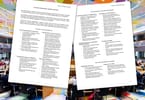Ryanair and JetBlue Airways executives believe it unlikely they will enter the trans-Atlantic LCC market, but have reached that conclusion for different reasons. Ryanair sees the market being too small compared to the opportunity within Europe while JetBlue does not think fares are high enough to stimulate.
“I think it won’t be Ryanair that will enter that market,” Ryanair COO and Deputy CEO Michael Cawley told the IATA World Passenger Symposium. Cawley primarily thought there was too small an opportunity across the Atlantic, which with about 80 million annual seats is one-tenth the size of the European market. Ryanair in the year to October 2013 flew 81m passengers (at about an 80% load factor).
“At one stage in our history we grew by 9 or 10m passengers in a year,” Cawley said. “If you were 9 or 10m passengers trans-Atlantic you would be the biggest gorilla on the market. And then what you do the next year?” Ryanair has explained its business model of chasing load factor rather than yield in order to generate scale and associated cost efficiencies.
Cawley believes there is “a small market” for trans-Atlantic but “it doesn’t have the potential the intra-European market does”. He says the 700m annual European market could grow beyond 900m, with most growth in the low-cost segment. While loquacious CEO Michael O’Leary has spoken of entering the trans-Atlantic market, some close to Ryanair have dismissed this – along with standing seats – as a publicity stunt.
Carrying 29m passengers in 2012, JetBlue was less fazed by a potential trans-Atlantic operation being proportionally too small. Rather it is current prices that discourage JetBlue SVP marketing Marty St. George.
“If you look at the fares from New York to Europe, six months out of the year it looks like the LCC flies it. There are regularly fares that are in the two digit dollars,” St. George says. This is the opposite of what JetBlue looks for. “What we like to see in our markets is markets with high fares we can stimulate. For much of the year it’s going to be tough to stimulate the trans-Atlantic marketplace.”
St. George singled out JetBlue partner Aer Lingus as “probably the closest to that [low-cost] model right now”.
Aer Lingus is growing trans-Atlantic capacity at a double-digit clip, but CCO Steven Kavanagh is discouraged. “For the wrong reason from a consumer’s perspective I think the trans-Atlantic is likely to be very controlled in terms of supply.” He did not elaborate further but could have been referencing most trans-Atlantic capacity being tied up in three joint-ventures.
He notes Aer Lingus is carrying about 1.25m annual passengers across the Atlantic and “that is something we could double and still be beneath the radar”.
JetBlue and Ryanair were dismissive from a macro outlook but were also discouraged by details. “All the things that make you a low-cost carrier are that much less leverage on the trans-Atlantic,” St. George said.
Cawley pointed to a loss of efficiency: “You’re not going to get another sector from New York to Europe simply because you turnaround in 25 minutes rather than an hour.” St. George reckoned Ryanair would not enter the trans-Atlantic market because “a successful LCC operation across the Atlantic has got to have multiple classes of service”.
Some see premium travel as the key difference for why low-cost long-haul across the Atlantic will not work despite there being low-cost long-haul airlines in Asia, including profitable AirAsia X. Trans-Atlantic, the argument goes, is more reliant on premium travel and that subsidises economy fares.
A spot check on non-stop fares including fuel surcharges affirms that, with New York-London having a yield of USD31 cents/km and Sydney-Singapore USD22 cents/km. Asia-Pacific airlines being more dependent on the economy cabin creates opportunity for a low-cost airline that can generate volume in economy class without needing strong premium numbers.
But there are counter-arguments. Cawley highlighted challenges with utilisation but AirAsia X and Scoot have some of the highest utilisation rates in the world. As for premium traffic, New York-London is the most premium market, and other city-pairs quickly decline in yield, especially if a connecting, not non-stop, flight is taken.
Unmentioned was the fact there is a flying low-cost trans-Atlantic operation: Norwegian Air Shuttle. City-pairs are limited and its bases in Scandinavia make some Western European destinations circuitous to reach (this partially changes with a London base next year).
Time will tell if Norwegian captures the public’s attention as a trans-Atlantic low-cost option or if it will be relegated with Aer Lingus and Icelandair as niches, which Cawley expects a trans-Atlantic LCC to be.
But niches can be successful, as Aer Lingus’ Kavanagh reminded Cawley: “Ryanair, as Aer Lingus’ largest shareholder, does have a rather large investment in a very compelling and efficient trans-Atlantic carrier.”
WHAT TO TAKE AWAY FROM THIS ARTICLE:
- “For the wrong reason from a consumer's perspective I think the trans-Atlantic is likely to be very controlled in terms of supply.
- “If you look at the fares from New York to Europe, six months out of the year it looks like the LCC flies it.
- Cawley primarily thought there was too small an opportunity across the Atlantic, which with about 80 million annual seats is one-tenth the size of the European market.






















